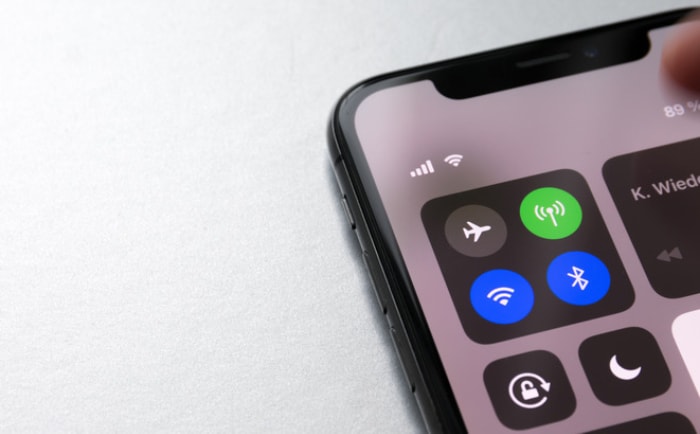Wi-Fi 6 vs. Wi-Fi 6E: Which Upgrade Is Worth It?

Wi-Fi 6 and Wi-Fi 6E have set the stage for faster, smarter, and more reliable wireless internet in homes and businesses worldwide. Choosing between them can feel overwhelming, especially with the buzz around 6 GHz spectrum and promises of future-proof connectivity.
Both standards promise impressive improvements over previous generations, but each is tailored for different needs and environments.
Technical Specifications Compared
Comparing Wi-Fi 6 and Wi-Fi 6E begins with looking at their technical foundations. From the frequencies they use to the number of available channels and how they support older devices, each standard sets itself apart through a range of features designed for modern connectivity.
Frequency Bands
Wi-Fi 6 operates on the widely used 2.4 GHz and 5 GHz bands, which most home and office devices already support. These bands offer solid range and compatibility, providing a stable wireless experience for the majority of users.
However, both bands can become crowded, especially in environments with many networks or devices.
Wi-Fi 6E introduces a major advancement by adding the 6 GHz band. This new spectrum offers far more space for wireless signals, reducing congestion and interference.
As a result, users benefit from cleaner, faster, and more reliable connections, especially in places where multiple Wi-Fi networks compete for bandwidth. The 6 GHz band is particularly important for supporting the next generation of high-speed devices and services.
Channel Availability
Channel availability directly influences network performance, especially in busy households, apartment buildings, or offices filled with connected devices. The 5 GHz band, used by both Wi-Fi 5 and Wi-Fi 6, is already divided into several channels, but only a handful are wide enough (80 MHz or 160 MHz) to provide truly high speeds.
Many of these channels often overlap or get crowded, leading to interference and slower connections.
Wi-Fi 6E significantly expands channel options with the 6 GHz band, introducing up to 14 additional 80 MHz channels. Having more wide channels means more devices can operate simultaneously without stepping on each other's signals.
This improvement is especially noticeable in homes with numerous smart gadgets or in environments where multiple people are streaming, gaming, or video conferencing at the same time. The abundance of wide, interference-free channels makes Wi-Fi 6E a game-changer for high-density scenarios.
Backward Compatibility
Smooth transitions between wireless generations rely on backward compatibility. Wi-Fi 6 was designed to support older devices, including those running on Wi-Fi 4 (802.11n) or Wi-Fi 5 (802.11ac).
This flexibility ensures that when upgrading to a Wi-Fi 6 router or access point, users do not need to replace all their existing devices at once. Devices simply continue to connect at their maximum supported speeds.
Wi-Fi 6E, on the other hand, is tailored for future-facing hardware. Only devices built with Wi-Fi 6E capability can access the 6 GHz band.
Older smartphones, laptops, and tablets will still function on the 2.4 GHz and 5 GHz bands but won’t benefit from the extra performance or reduced congestion of 6 GHz unless they are upgraded to 6E-compatible models. For anyone planning a network upgrade, considering the compatibility of current and future devices is essential to getting the most out of a Wi-Fi 6E investment.
Performance and Real-World Applications

Performance is the benchmark most users notice first, whether downloading massive files, gaming online, or hosting virtual meetings. Wi-Fi 6 and Wi-Fi 6E both offer a substantial step up from previous standards, but the differences in their real-world impact become clear when you factor in speed, latency, congestion management, and the types of activities each is best suited for.
Speed and Latency
Wi-Fi 6 and Wi-Fi 6E are both based on the 802.11ax standard and offer similar top theoretical speeds, reaching up to approximately 9.6 Gbps. Still, most real-life situations rarely approach those limits due to physical barriers, internet provider speeds, and the number of devices sharing the network.
The real win comes from improvements in efficiency, especially with many devices on the same network.
Wi-Fi 6E’s introduction of the 6 GHz band makes a noticeable difference in latency, which is the time it takes for data to travel back and forth between your device and the server. Lower latency is crucial for competitive gaming, virtual reality, and any application where every millisecond counts.
The clean, uncongested spectrum of 6 GHz reduces interference, resulting in consistently smoother and more responsive experiences.
Congestion Handling
Crowded environments like apartment complexes or busy offices can test the limits of older Wi-Fi technologies. Wi-Fi 6 improves handling by using technologies such as OFDMA and MU-MIMO, which are designed to serve multiple devices efficiently and minimize interference.
Wi-Fi 6E takes congestion management even further by utilizing the wide-open 6 GHz band. Having more available channels means fewer devices competing for the same frequencies and far less interference from neighboring networks.
This advantage proves invaluable in spaces where dozens of laptops, smartphones, smart TVs, and IoT devices need fast, reliable connections at the same time. Performance remains stable even during peak hours, reducing frustration and boosting productivity.
Ideal Use Cases
Selecting between Wi-Fi 6 and Wi-Fi 6E often comes down to the environment and types of activities you need to support. Wi-Fi 6 is an excellent choice for everyday home use and mixed-device environments.
Households with a variety of older and newer devices will see improvements in speed, stability, and coverage without needing to replace all their equipment.
Wi-Fi 6E shines in more demanding situations. Households or businesses engaging in data-heavy activities like 8K video streaming, running industrial IoT setups, or providing immersive AR and VR experiences benefit the most from the new 6 GHz band.
Gamers, media professionals, and tech enthusiasts looking to maximize their network’s potential find Wi-Fi 6E especially rewarding, provided their devices can take advantage of what the 6 GHz spectrum offers.
Coverage and Range Considerations

Coverage and range play a crucial role in wireless networking decisions, especially as more people expect seamless connections in every corner of their homes and workplaces. While the latest Wi-Fi standards push speed and capacity to new heights, range and signal reliability still depend heavily on frequency, obstacles, and layout.
Signal Penetration
Signal strength and the ability to travel through walls or floors are both determined by the frequency bands used. The 2.4 GHz band, present in Wi-Fi 6 devices, is well-known for its robust range and better penetration through obstacles, making it ideal for sprawling homes or locations with thick walls.
The 5 GHz band offers faster speeds but with slightly reduced reach and penetration.
Wi-Fi 6E’s 6 GHz band brings a new challenge. Higher frequencies like 6 GHz are less capable of moving through solid objects such as concrete walls or floors.
As a result, coverage per access point drops compared to 2.4 GHz or even 5 GHz networks. Devices on the 6 GHz band may experience dead zones in distant rooms or on different floors.
Placing access points strategically or relying on Wi-Fi mesh systems often becomes necessary to achieve whole-home or whole-office coverage when using Wi-Fi 6E hardware.
Indoor vs. Outdoor Performance
Performance expectations often shift based on whether the network is used indoors or outdoors. Wi-Fi 6, operating on the lower 2.4 GHz and 5 GHz bands, tends to serve both environments reliably, with the 2.4 GHz band extending coverage into yards, garages, and nearby outdoor spaces.
Wi-Fi 6E, with its 6 GHz frequency, is better suited for contained indoor environments where walls or obstacles are minimal and where dense device populations can benefit from the clean spectrum. Larger homes, warehouses, or outdoor areas may see coverage gaps if relying solely on 6 GHz, as the higher frequency signals fade quickly with distance and obstruction.
Outdoor use often places greater demands on range, and here, the traditional lower-frequency bands still hold the advantage.
Network Congestion Trade-offs
Choosing between broader coverage and higher bandwidth comes down to the needs and structure of each network. The wide, interference-free lanes of the 6 GHz band allow for more devices and faster, more stable connections in crowded environments, but the trade-off comes with shorter reach and more rapid signal drop-off through walls and floors.
Network architects and home users alike must often strike a balance between the coverage benefits of lower frequencies and the robust bandwidth of higher ones. Mesh networks or additional access points can help overcome range limitations, but add to network complexity and cost.
Ultimately, assessing where high speeds are essential versus where simple, reliable coverage is the main priority guides the best use of Wi-Fi 6 and Wi-Fi 6E capabilities.
Challenges and Limitations

While Wi-Fi 6 and Wi-Fi 6E both push wireless performance to new heights, certain barriers still stand in the way of a seamless and universal upgrade. The journey from cutting-edge capability to practical everyday use involves more than technical advantages; hardware, regulatory factors, and expense all play significant roles in shaping adoption.
Hardware Requirements
Upgrading to Wi-Fi 6E is not as simple as switching out a router. Accessing the 6 GHz band requires a fully compatible ecosystem, including Wi-Fi 6E routers or access points, as well as client devices such as laptops, smartphones, and network adapters that natively support 6E connectivity.
While Wi-Fi 6 equipment is broadly compatible with older hardware, Wi-Fi 6E’s benefits remain locked away unless both the sending and receiving devices are built for the new standard. Many users find that only the latest flagship devices and high-end computers currently offer native 6E support, making it necessary to assess the range of devices in everyday use before investing in a next-generation network.
Regulatory Restrictions
Although the promise of the 6 GHz band is alluring, not every region allows access to the same channels or spectrum widths. Government regulators control the use of wireless frequencies, and the availability of the 6 GHz band can vary dramatically from country to country.
In some places, only a portion of the spectrum is open for use, or strict transmission power limits may reduce performance. Networks deployed in global businesses, or in regions with tight regulations, must factor in these variations to ensure compatibility and maximize network performance.
As adoption grows, regulations are evolving, but disparities remain a source of confusion and limitation for some users.
Cost Implications
Adoption of Wi-Fi 6E brings cutting-edge capability but often comes at a higher price. Routers, mesh systems, and compatible client devices with 6E support typically cost more than their Wi-Fi 6, or legacy counterparts.
The added expense reflects the advanced technology inside, as well as the newness of the platform. Over time, prices are expected to come down as 6E becomes more common, but for now, upgrading every device and access point can represent a significant investment, especially for large households or organizations.
Deciding where and how to prioritize these expenses often shapes the pace of adoption and the extent to which users tap into the benefits of Wi-Fi 6E.
Adoption Considerations

Choosing between Wi-Fi 6 and Wi-Fi 6E involves more than comparing technical specs. Personal habits, business needs, and network environments all play a role in the best path forward.
Anyone weighing an upgrade will want to match their network goals to the demands of daily life, future technologies, and the mix of devices that use their connection.
Target User Profiles
Different user profiles benefit in unique ways from each Wi-Fi generation. Early adopters who crave the latest features and often own the newest smartphones, laptops, and smart home gadgets are best positioned to enjoy Wi-Fi 6E.
Households where streaming, online gaming, and remote work happen simultaneously stand to gain the most from the extra capacity and lower latency of the 6 GHz band.
Casual users and families with a blend of older and newer devices may find Wi-Fi 6 a more practical choice. Broad compatibility and solid performance improvements make Wi-Fi 6 a smart step up from previous standards, with fewer requirements for device upgrades.
Home networks focused on web browsing, video calls, and routine streaming typically experience strong improvements after moving to Wi-Fi 6, even without immediate access to 6 GHz frequencies.
Future-Proofing Networks
Network upgrades today carry the promise of supporting tomorrow’s technologies. Smart home devices, cloud gaming, and new digital experiences such as AR, VR, and metaverse applications continue to raise expectations for speed and stability.
Future-proofing a network means weighing current needs against anticipated growth.
Wi-Fi 6E provides headroom for emerging trends, especially where high throughput, low latency, and congestion-free channels are essential. Early investment in Wi-Fi 6E prepares homes and offices for an influx of devices and services that will demand robust connectivity.
At the same time, many families and organizations will find Wi-Fi 6 provides ample power for most present and near-future uses, delaying the need for a more advanced upgrade until 6E-compatible hardware becomes mainstream.
Compatibility with Existing Infrastructure
Upgrading a wireless network often hinges on how well new equipment fits with what is already in place. Assessing the current mix of devices, routers, and adapters can reveal what kind of upgrade path makes the most sense.
Moving to Wi-Fi 6 rarely requires wholesale replacement of devices, as the standard maintains strong backward compatibility and brings benefits even to older hardware.
Transitioning to Wi-Fi 6E is more complex. Only devices built with 6E support can access the advantages of the 6 GHz band, so a staggered upgrade approach is common.
For anyone considering a full network refresh, mapping out device compatibility across laptops, mobiles, and smart home gear simplifies planning and ensures investments pay off as efficiently as possible. Smooth upgrades balance the excitement of cutting-edge improvements with practical realities, ensuring every device gets the connectivity it needs.
Conclusion
Choosing between Wi-Fi 6 and Wi-Fi 6E comes down to balancing performance, coverage, cost, and device requirements. Wi-Fi 6 delivers a noticeable boost to speed, efficiency, and network stability, especially for homes or businesses with a mixture of old and new devices.
Coverage remains strong across rooms and floors, which makes it ideal for spaces where reliable range matters as much as raw speed.
Wi-Fi 6E pushes wireless capabilities further by opening up the 6 GHz band for faster connections and minimal congestion. This is perfect for busy offices, dense apartment buildings, or tech-forward homes with the latest compatible devices.
However, its higher price point, shorter range, and strict hardware requirements mean the full benefits are best realized in environments where ultra-fast, interference-free connections outweigh broader coverage needs.
For most households, Wi-Fi 6 offers an immediate, cost-effective improvement without the need to overhaul every device. Enterprises, creative professionals, and early adopters demanding maximum speed and future-proofing may find Wi-Fi 6E worth the investment, especially if planning for new technologies like AR, VR, or massive IoT growth.


